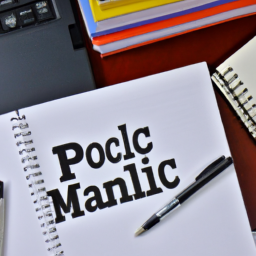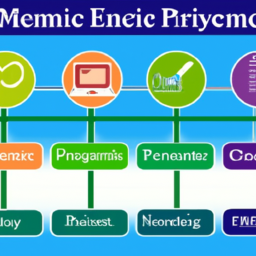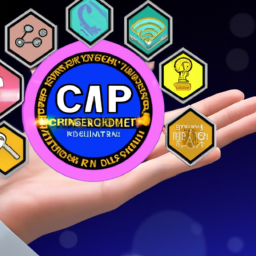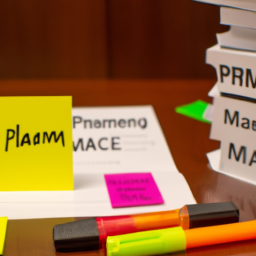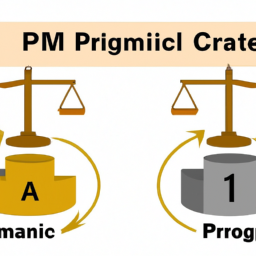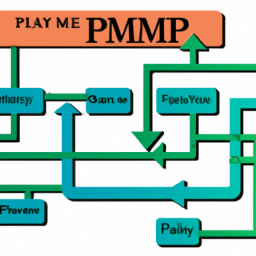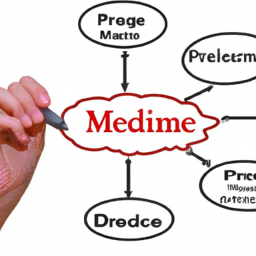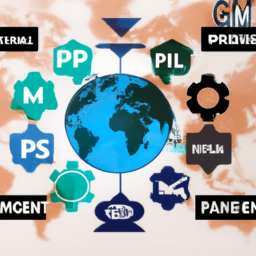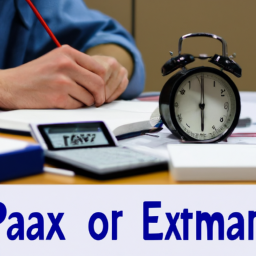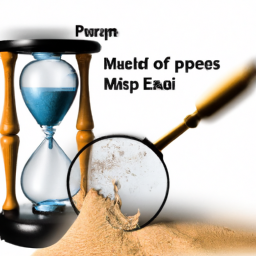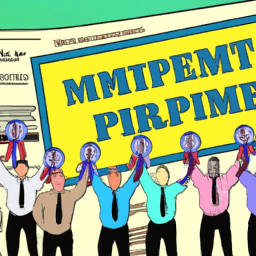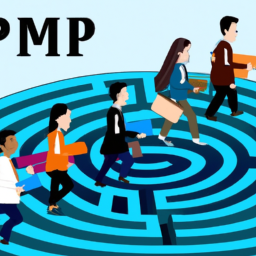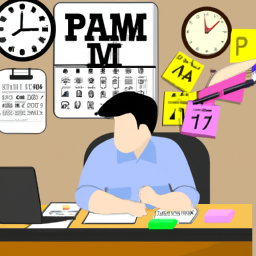Are you preparing for the PMP exam and feeling overwhelmed by the sheer volume of topics to cover? Don’t worry, we’ve got you covered!
In this article, we will walk you through the 10 must-know PMP exam topics that will set you up for success. From Project Integration Management to Project Stakeholder Management, we’ll break down each topic in a knowledgeable, organized, and thorough way.
So grab a pen and paper, because we’re about to make your PMP exam journey a whole lot smoother.
Key Takeaways
- Project integration management is crucial for coordinating all project components and ensuring project success.
- Project scope management is important for defining project objectives, deliverables, and boundaries, as well as managing scope creep.
- Critical path analysis is a key technique in project schedule management and risk management for identifying the longest path of activities and prioritizing resources.
- Resource allocation techniques and project resource management are essential for optimizing resource utilization, balancing workloads, and efficiently managing resources for project completion.
Project Integration Management
You’ll need to understand the key processes and techniques of Project Integration Management for the PMP exam.
Project Integration Management is a crucial aspect of project management, as it involves coordinating all the different components of a project to ensure its success.
The first step in Project Integration Management is project integration planning, where you develop a comprehensive plan for how the project will be executed. This includes defining project objectives, identifying project deliverables, and determining the project’s scope.
Once the planning phase is complete, the project moves into the execution phase. During this phase, the project team carries out the activities outlined in the project integration plan. This involves coordinating resources, managing risks, and ensuring that all project tasks are completed on time and within budget.
Understanding both project integration planning and project execution is essential for achieving success in managing projects.
Project Scope Management
To effectively manage project scope, it’s essential to clearly define and control the project’s boundaries. By establishing a project scope definition, you can outline the deliverables, objectives, and constraints of the project. This helps in setting realistic expectations and ensuring everyone involved understands what is included and excluded from the project.
Scope creep management is another crucial aspect of project scope management. It refers to the uncontrolled expansion of project scope, leading to budget and schedule overruns. To prevent scope creep, it’s important to have a change control process in place, where any proposed changes are evaluated against the project’s objectives and impact on scope, schedule, and budget.
By effectively managing project scope, you can ensure project success and avoid unnecessary complications.
Now, let’s transition into the subsequent section about ‘project schedule management’, where we will discuss the importance of creating a well-defined project schedule and techniques to effectively manage it.
Project Schedule Management
When it comes to managing project schedules, there are two key points that you must be familiar with: Critical Path Analysis and Resource Allocation Techniques.
Critical Path Analysis is a method used to determine the longest path of activities in a project, allowing you to identify the tasks that are critical to the project’s timeline.
On the other hand, Resource Allocation Techniques help you effectively distribute and utilize resources to ensure that tasks are completed on time and within budget.
Understanding and implementing these techniques will greatly contribute to the successful management of project schedules.
Critical Path Analysis
Calculating the critical path is essential for identifying the longest sequence of activities in your project. Critical path analysis is a key technique used in project risk management to determine the activities that have the greatest impact on the project’s timeline. By identifying the critical path, you can focus your attention and resources on these activities to ensure the project stays on track.
To perform a critical path analysis, you need to first identify all the activities in your project and their dependencies. Then, you calculate the earliest start and finish times for each activity, as well as the latest start and finish times. The activities that have the same earliest and latest start and finish times are considered critical, as any delay in these activities will directly impact the project’s overall duration.
Understanding the critical path allows you to prioritize your efforts and resources, ensuring that the activities on the critical path are given the necessary attention and resources to keep the project on schedule. By managing the critical path effectively, you can mitigate project risks and increase the chances of successful project completion.
Now that you have a clear understanding of critical path analysis, let’s move on to the next topic: resource allocation techniques. These techniques will help you in effectively assigning and managing resources to ensure the smooth execution of your project.
Resource Allocation Techniques
Understanding the critical path is crucial for effectively allocating resources to ensure the successful execution of your project. Once you have identified the critical path, you can then use resource allocation techniques such as resource leveling and resource smoothing to optimize the utilization of your project resources.
Resource leveling involves adjusting the project schedule to eliminate resource overloads. This technique aims to balance the workload of your resources by rescheduling tasks or adding additional resources. By doing so, you can avoid situations where some resources are overwhelmed with work while others are underutilized.
On the other hand, resource smoothing focuses on maintaining a constant resource utilization rate throughout the project duration. This technique involves adjusting the timing of activities within the float or slack time, without extending the project duration. By doing so, you can avoid resource peaks and valleys, ensuring a more consistent and efficient resource utilization.
Both resource leveling and resource smoothing techniques are useful for optimizing resource allocation and ensuring a smooth project execution. By implementing these techniques, you can improve resource utilization, minimize resource conflicts, and ultimately increase the chances of project success.
Project Cost Management
The key to effective Project Cost Management is accurately estimating and controlling project expenses.
Project cost estimation involves determining the costs associated with all the resources needed for the project, including labor, materials, equipment, and overhead. It is essential to consider all these factors to ensure an accurate estimation.
To control project costs, various techniques can be employed. One such technique is cost control, which involves monitoring and tracking expenses throughout the project’s lifecycle. This includes comparing actual costs against the estimated costs, identifying any variances, and taking corrective actions if necessary.
Other cost control techniques include implementing cost-saving measures, negotiating with vendors for better prices, and optimizing resource allocation.
Project Quality Management
To ensure project success, it’s crucial to prioritize and maintain high standards of quality throughout all project activities. Project quality control and quality assurance techniques play a vital role in achieving this goal.
Here are three key points to consider when it comes to project quality management:
-
Implement a comprehensive quality control plan: Develop a plan that outlines the quality control activities, processes, and tools to be used throughout the project. This will help identify and address any potential quality issues before they become major problems.
-
Conduct regular quality inspections: Regularly inspect and assess the project deliverables to ensure they meet the defined quality standards. This includes performing tests, reviews, and audits to identify any deviations or non-conformities that need to be addressed.
-
Continuously improve quality assurance processes: Regularly evaluate and improve the quality assurance techniques being used. This may involve implementing new tools and methodologies, providing training to team members, and seeking feedback from stakeholders to ensure that quality standards are consistently met.
Project Resource Management
Project resource management involves effectively allocating and managing the necessary resources to ensure the successful completion of a project. Resource planning is a crucial aspect of project management. It involves identifying, acquiring, and utilizing resources such as people, equipment, and materials in the most efficient and effective manner. This includes determining the types and quantities of resources needed, estimating the duration of resource utilization, and creating a resource schedule.
Team coordination is also a key component of project resource management. It involves assigning resources to specific tasks, ensuring that team members have the necessary skills and knowledge to perform their roles, and monitoring their progress to ensure they stay on track.
Effective resource planning and team coordination are essential for project success. They help ensure that all necessary resources are available when needed and that tasks are completed in a timely manner.
Project Communications Management
Make sure you understand the importance of effective communication in managing a project.
Communication is a vital aspect of project management as it ensures that all stakeholders are on the same page and working towards the same goals.
To effectively manage project communications, you need to develop a project communications plan that outlines the communication goals, audience, and methods. This plan will serve as a guide for all communication activities throughout the project.
Additionally, you need to establish clear communication channels that allow for efficient and timely communication. These channels can include meetings, emails, project management software, or even social media platforms.
Project Risk Management
In project risk management, you need to be equipped with various techniques to identify potential risks that could impact your project. These techniques involve analyzing historical data, conducting brainstorming sessions, and using checklists to ensure comprehensive risk identification.
Once the risks are identified, it is crucial to develop effective response strategies, such as mitigating, transferring, accepting, or avoiding the risks, to minimize their impact on the project’s success.
Lastly, the risk monitoring process plays a vital role in continuously assessing and tracking the identified risks, evaluating the effectiveness of the response strategies, and making necessary adjustments to keep the project on track.
Risk Identification Techniques
To identify risks, you should brainstorm potential issues and use techniques like SWOT analysis and checklists. These risk assessment techniques help you systematically uncover potential risks and evaluate their impact on your project. Here are three effective techniques you can use:
-
Brainstorming: Gather your project team and encourage them to think creatively about possible risks. This technique allows for open discussion and generates a wide range of ideas.
-
SWOT analysis: Evaluate your project’s strengths, weaknesses, opportunities, and threats. This analysis helps identify internal and external risks and provides insights into how to mitigate them.
-
Checklists: Utilize predefined checklists that cover common risks and issues in your industry or project type. These checklists ensure that you don’t overlook any potential risks that might arise.
Risk Response Strategies
You can effectively address identified risks by implementing appropriate risk response strategies. These strategies, also known as risk mitigation strategies, are designed to reduce the impact or likelihood of a risk occurring. There are four main types of risk response strategies:
| Risk Response Strategy | Description |
|---|---|
| Avoidance | Eliminating the risk by taking actions to prevent it from occurring. |
| Mitigation | Reducing the impact or likelihood of the risk through proactive measures. |
| Transfer | Shifting the risk to a third party, such as through insurance or outsourcing. |
| Acceptance | Acknowledging the risk and its potential consequences without taking any specific action. |
Risk Monitoring Process
By actively monitoring risks, you can stay informed about potential issues that may arise in your project. Risk monitoring is a crucial part of the risk assessment process, allowing you to identify, assess, and respond to risks in a timely manner.
Here are three risk monitoring techniques that can help you effectively manage risks in your project:
-
Regularly review and update your risk register: Keep track of all identified risks, their probability and impact, and the planned responses. Regularly update this register to reflect any changes or new risks that arise during the project.
-
Conduct periodic risk assessments: Assess the current status of identified risks to determine if they have changed in likelihood or impact. This will help you prioritize your response actions and allocate resources accordingly.
-
Monitor project performance indicators: Establish key performance indicators (KPIs) to track how the project is progressing and identify any potential deviations from the plan. By monitoring these indicators, you can proactively identify risks and take appropriate actions to mitigate them.
Overall, by implementing these risk monitoring techniques, you can stay proactive in managing risks and ensure the success of your project.
Project Procurement Management
The key to successful project procurement management is understanding the different contract types. When it comes to procurement planning, it is crucial to carefully consider the specific needs of your project and determine the most suitable type of contract.
There are several contract types to choose from, including fixed price, cost reimbursable, and time and material contracts. Each contract type has its own advantages and disadvantages, so it is important to weigh the risks and benefits before making a decision.
Once the contract is in place, effective contract administration is essential to ensure that both parties adhere to the terms and conditions. This involves monitoring the contract performance, managing changes, and resolving any disputes that may arise.
Project Stakeholder Management
In order to successfully manage stakeholders in a project, it is essential to first identify who the key stakeholders are. These are the individuals or groups who have a vested interest in the project and can significantly impact its outcome.
Once the key stakeholders are identified, it is important to manage their expectations effectively by clearly communicating project goals, timelines, and deliverables. This requires open and transparent communication, as well as active engagement with stakeholders throughout the project lifecycle to ensure their needs and concerns are addressed.
Identifying Key Stakeholders
It’s important to identify key stakeholders when managing a project. Stakeholder analysis is a crucial step in understanding who the stakeholders are, what their interests and expectations are, and how they can impact the project. By conducting a stakeholder analysis, you can identify the most influential stakeholders and prioritize your engagement efforts accordingly.
Here are three key things to consider when identifying key stakeholders:
-
Stakeholder identification: Begin by brainstorming and creating a list of potential stakeholders. This can include individuals, groups, or organizations that will be affected by or have an impact on the project.
-
Stakeholder mapping: Once you have identified the stakeholders, map them out based on their level of influence and interest in the project. This will help you understand who should be prioritized for engagement and communication.
-
Stakeholder engagement plan: Develop a plan to engage with the identified stakeholders throughout the project lifecycle. This involves determining the best methods and frequency of communication, as well as addressing any potential conflicts or concerns.
Managing Stakeholder Expectations
To effectively manage stakeholder expectations, you should regularly communicate and engage with them throughout the project lifecycle. This ensures that their needs and concerns are addressed, and that they are aligned with the project goals.
One effective way to manage stakeholder expectations is through stakeholder analysis. By identifying and analyzing the stakeholders, you can gain insights into their expectations, influence, and potential impact on the project. This allows you to prioritize and tailor your communication and engagement strategies accordingly.
For example, you may need to provide more frequent updates and involve influential stakeholders in decision-making processes. By actively managing expectations and engaging with stakeholders, you can foster positive relationships, build trust, and increase the likelihood of project success.
In the next section, we will explore the importance of communication and engagement in more detail.
Communication and Engagement
Regularly communicating and engaging with stakeholders throughout the project lifecycle is crucial for effectively managing their expectations and ensuring project success. By establishing open lines of communication, you can address any concerns or questions they may have, and keep them informed about the progress and potential challenges of the project.
To enhance your communication and engagement strategies, consider the following:
-
Conduct a thorough stakeholder analysis to identify key individuals or groups who may have a vested interest in the project. This will help you tailor your communication approach to their specific needs and expectations.
-
Be aware of potential communication barriers, such as language differences, cultural norms, or conflicting priorities. Adapt your communication style and medium accordingly to ensure messages are understood and received.
-
Implement regular check-ins and feedback sessions with stakeholders to gather their input and address any issues or concerns that may arise. This demonstrates your commitment to their involvement and helps build trust and collaboration.
Frequently Asked Questions
What Are Some Common Challenges Faced in Project Stakeholder Management?
When it comes to project stakeholder management, you might face some common challenges.
Stakeholder engagement can be tricky, as different stakeholders have different needs and expectations. Understanding their perspectives and finding ways to keep them engaged can be a real struggle.
Additionally, conducting a stakeholder analysis to identify and prioritize stakeholders can be time-consuming and complex.
But don’t worry, by staying organized and thorough, you’ll be well-prepared to tackle these challenges and ensure successful stakeholder management.
How Can Project Managers Ensure Effective Communication With Stakeholders Throughout the Project?
To ensure effective communication with stakeholders throughout the project, you need to focus on stakeholder engagement and create a communication plan. By actively involving stakeholders in the project and keeping them informed, you can build trust and maintain their support.
Develop a clear and concise communication plan that outlines the frequency, methods, and content of communication with each stakeholder. Regularly update stakeholders on project progress and address any concerns or feedback they may have. This will help ensure effective communication and successful project outcomes.
What Are Some Key Risk Identification Techniques Used in Project Risk Management?
To excel in the PMP exam, you must grasp key risk identification techniques. These strategies play a crucial role in effective project risk management.
By identifying potential risks early on, you can proactively address them, minimizing their impact on your project’s success.
From brainstorming sessions to data analysis, there are various methods at your disposal. Mastering these techniques will equip you with the skills needed to navigate the complexities of project management with confidence.
What Are the Steps Involved in the Project Procurement Management Process?
To ensure success in the PMP exam, it’s crucial to understand the steps involved in the project procurement management process.
First, you need to develop a project procurement plan that outlines how procurement will be managed.
Then, you move on to conducting procurements, which involves obtaining bids and selecting vendors.
Finally, you must administer the procurement contracts, monitoring vendor performance and ensuring contract compliance.
Understanding these processes is essential for effective project procurement management.
How Can Project Managers Effectively Manage Project Resources to Ensure Successful Project Completion?
To effectively manage project resources and ensure successful project completion, project managers must focus on project resource allocation and resource optimization. This involves identifying the necessary resources for each task and assigning them accordingly.
Additionally, project managers should regularly review resource usage and make adjustments as needed to maximize efficiency. By effectively managing project resources, project managers can ensure that the right resources are allocated to the right tasks at the right time, ultimately leading to successful project completion.
Conclusion
Congratulations on reaching the end of this article! By now, you have gained valuable insights into the 10 must-know PMP exam topics for success.
With a strong grasp of project integration, scope, schedule, cost, quality, communications, risk, procurement, and stakeholder management, you are well-equipped to tackle the PMP exam with confidence.
Remember, success lies in your hands, and this knowledge will serve as your compass on your journey to becoming a PMP-certified professional.
So, embrace these topics, master them, and let them guide you towards triumph in your PMP exam!

